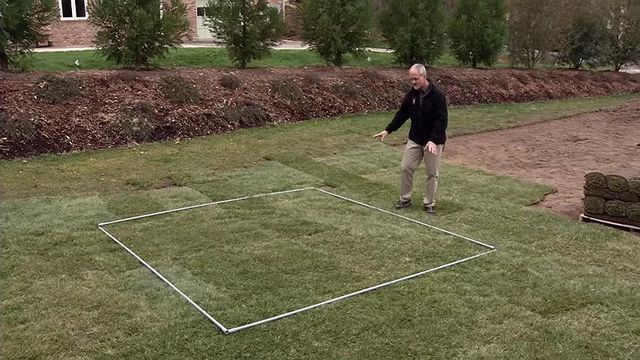Tips for preparing your yard for turfgrass sod
Installing turfgrass sod requires a strong foundation -- start properly and start strong, and your lawn will last.
Posted — UpdatedEveryone and everything starts somewhere. For example, homes that stand for generations start with a strong foundation. Installing turfgrass sod is no different -- start properly and start strong, and your lawn will last.
Healthy sod starts with a healthy site. Prepare the site by removing weeds and debris and then plan for drainage and grading of the site.
So, with weeds and debris removed, next be sure to plan for easy maintenance and healthy appearance of the lawn. Try to avoid steep grades and overly shaded spots. Aim for a 1- to 2-percent slope away from building foundations as a sweet spot for proper drainage and ease of care.
Tilling of the soil is crucial, because it allows the topsoil and subsoil to bond. This helps your turfgrass sod because it improves root penetration and water movement. Why is that such a big deal? 80 percent of a grass plant's weight is in its roots, and the roots are what hold the soil and plant together, forming the sod. Take care of your roots, and they will take care of you.
Take a soil sample from your front and back yard to determine pH levels of the soil and learn the nutrient requirements you will need to meet. With that information, choose the proper fertilizer for your soil and the turfgrass you will be installing.
Apply the correct amount of lime and fertilizer recommended for your soil. Then, finish grading the entire site, maintaining rough grading contours and slopes using a tractor-mounted box blade (large sites) or a heavy-duty rake (smaller sites).
If possible, roll the area with a lawn roller in order to help settle the surface and reveal any low spots that should be filled to match the surrounding grade level. If time permits, allow the area to settle further with rainfall or by applying irrigation water.
Install the sod. Upon installation, apply fertilizer uniformly with a rotary or drop-type spreader.
You may have noticed how many steps took place before the sod was actually installed. When it comes to turfgrass sod, preparation is the key to unlocking a long-lasting and lovely lawn that will be enjoyed for generations to come.
Copyright 2024 by Capitol Broadcasting Company. All rights reserved. This material may not be published, broadcast, rewritten or redistributed.






